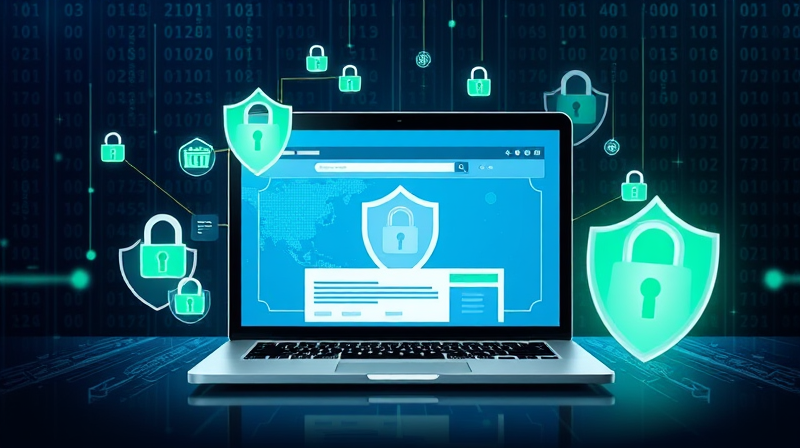Online shopping has transformed the way we buy our everyday essentials and luxury products alike. With so much convenience at our fingertips, it is important to be proactive and cautious to ensure that your purchases are safe and secure.
The ease of shopping online comes with its own set of challenges. Scam artists and fraudsters are more innovative than ever, using sophisticated methods to trick consumers and pocket extra charges. However, by staying informed and implementing smart strategies, you can empower yourself to shop safely and confidently.
Understanding the Risks in Online Shopping
Before you click on that enticing offer, it is crucial to understand the common scams that can turn a promising deal into a financial nightmare. Awareness is the first step in protecting yourself.
Many online scams involve fake websites or misleading sellers. Fraudsters spend time creating web pages that look professional, yet are designed to trick you into giving away your personal information or persuading you to pay for non-existent products.
Phishing and smishing techniques are on the rise, where scammers send emails or texts that mimic trusted brands. These messages may prompt you to click on a link or provide sensitive data.
- Fake Websites: Look for clear signs such as poor design, broken links, and special offers that seem too good to be true.
- Phishing Emails: Always check the sender’s email address and verify with the official website before entering any information.
- AI-Powered Scams: Deepfake videos and cloned voices are emerging threats, so stay alert if something seems off.
Scammers may also take advantage of refund policies or use tactics like falsely claiming that your card is declined, resulting in unexpected charges. Each of these scams is designed to catch you off guard.
It is essential to be skeptical of unsolicited deals that appear in your email or on social media. Verification of the source is a small step that can save you significant stress later on.
Practical Tips to Enhance Your Online Shopping Security
Armed with an understanding of potential pitfalls, you can adopt protective measures that ensure your transactions remain secure and free from fraud.
Always verify website security. Ensure that the sites you are shopping on display secure protocols. Check for URLs beginning with https:// and a padlock symbol in the address bar, which indicates that the connection is encrypted.
Using secure payment methods is another critical aspect of safe shopping. Credit cards, for instance, provide robust fraud protection, making them a preferred choice for online transactions. In contrast, avoid using payment methods that are hard to trace or recover funds from, such as cryptocurrencies or wire transfers.
It is also wise to enable multifactor authentication (MFA) on your online accounts. Adding an extra layer of security helps protect access to sensitive information even if your password is compromised.
Here are some practical recommendations designed to reduce potential risks:
- Secure your devices: Regularly update your devices with the latest security patches and antivirus software.
- Opt for trusted sellers: Check for verified profiles and browse independent reviews on trusted platforms.
- Avoid public Wi-Fi: If you must use public networks, remember to install a VPN for added security.
Following these steps can really fortify your defenses against unforeseen scams and extra charges. Implementing these practices today equips you with the resilience needed to outsmart cybercriminals.
It is also important to limit the use of peer-to-peer payment apps for business transactions. While these apps offer convenience, they often lack comprehensive fraud protection that comes with traditional payment methods. Always opt for financial tools that provide built-in recovery options.
What To Do If You Encounter a Scam
Despite the best precautions, scams might still occur. When they do, it is imperative to act swiftly. If you realize that you have fallen victim to a scam, do not hesitate to take immediate steps to mitigate the consequences.
Report any fraudulent activity to your bank or credit card provider right away. This immediate action can often limit further damage, such as unauthorized charges or identity theft.
Protect your identity by updating your passwords and enabling fraud alerts. If necessary, consider freezing your credit to prevent any further unauthorized access.
If you have clicked on a malicious link, run a thorough malware scan on your device. These scans help identify any potential threats, giving you the opportunity to remove viruses or spyware from your system.
It is advisable to file complaints with consumer protection agencies like the Better Business Bureau and the Federal Trade Commission. Their intervention can sometimes lead to better resolutions and also help prevent further scams.
Remember, maintaining a proactive stance when it comes to online shopping security is not just about safeguarding your money; it is also about protecting your personal information and maintaining trust in the digital marketplace.
By continuously educating yourself and adopting these security measures, you are taking significant strides toward a safer online shopping experience. Smart online buying is about making informed decisions and having the confidence to shop without fear of scams or extra charges. Every step you take reinforces your ability to shop both smart and safely.
Keep this guide in mind as you navigate the vast world of online shopping. With vigilance and the right strategies, you can truly enjoy the benefits of digital commerce without compromising your security.








